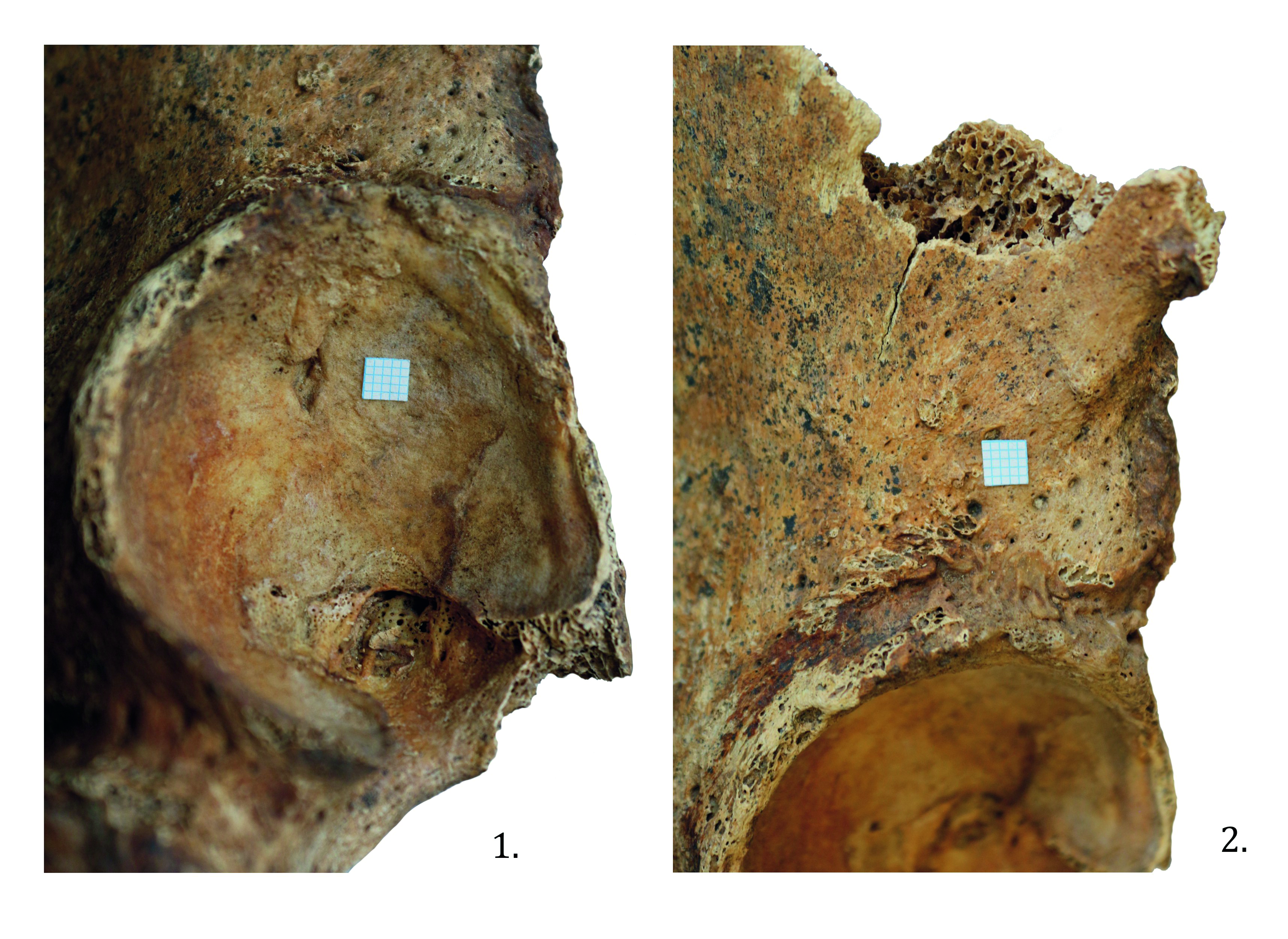Male Skeleton from Burial No. 7 of the Mordva-Moksha Bednodemyanovsk Burial Ground of the XIII–XIV Centuries
DOI:
https://doi.org/10.24852/2587-6112.2024.3.94.109Keywords:
archaeology, Upper Moksha river, Mordva-Moksha, Golden Horde, Bednodemyanovsk burial ground, paleopathology, craniometry, osteometry, indicators of mechanical stressAbstract
The article presents the complex characteristic of the skeleton from burial № 7 of the Bednodemyanovsk burial ground of the Mordva-Moksha. The archeological site is dated to the Golden Horde period (XIII–XIV centuries) and is located in Upper Moksha river. The skeleton belonged to the man aged 35–55 years. The aim of the study was to make the most complete reconstruction of the morphological specifics of the individual and his life activity. For this purpose, the bones were carefully studied visually and metrically. Cone beam computed tomography was performed on a VATECH PAX 1 3D device with Ez3D-i64 software. The approximate body length of the individual was determined (about 169.0 cm). The longitudinal measurements of the long tubular bones were the base for it. The skeleton showed multiple traces of pathological changes and indicators of mechanical stress. The individual (apparently in infancy) had the foot trauma. The fracture of the right clavicle in the middle third of the body was in adulthood. A specific characteristic of the individual was spastic contraction of the facial muscles of the lower right side of the face, possibly as a result of facial nerve injury. It was habitual for the individual to move with tensely flexed legs. This may have been related to labor activity or may have been the result of pathology. The characteristic structure of the sternum suggests that the individual was engaged in heavy lifting using a strap across the chest. The arms were slightly bent at the forearms to hold the weight. The hands were tensely flexed at the same time. The study of the skeleton from burial № 7 will let know the lot about the life of the medieval Mordvins and the level of medicine of that time.
References
Alekseev, V. P. 1966. Osteometriya. Metodika antropologicheskikh issledovaniy (Osteometry. Methods of anthropological research). Moscow: “Nauka” Publ. (in Russian).
Alekseev, V. P., Debets, G. F. 1964. Kraniometriia. Metodika antropologicheskikh issledovanii (Craniometry. Anthropologic Research Technique). Moscow: “Nauka” Publ. (in Russian).
Belorybkin G.N. 2003. Zapadnoye Povolzh'ye v sredniye veka (Western Volga region in the Middle Ages). Penza: Publishing house of Penza State Pedagogical University (in Russian).
Maynov, V. N. 1883. Rezul'taty antropologicheskikh issledovaniy sredi mordvy-erzi (Results of anthropological research of the Mordva-Erzya). Saint Petersburg: “A.S. Suvorin” Publ. (in Russian).
Maliev, N. M. 1878. Obshchiye svedeniya o mordve Samarskoy gubernii; ikh antropologicheskiy kharakter; pozdniye braki i vliyaniye ikh na krepost' i slozheniye naroda. Natsional'nyye osobennosti cherepa (General information about the Mordvins of the Samara Governorate; their anthropological character; late marriages and their influence on the strength and constitution of the people. National features of the skull). Kazan: Kazan University Publishing House (in Russian).
Pezhemskiy, D. V. 2011. Izmenchivost’ prodol’nykh razmerov trubchatykh kostei cheloveka i vozmozhnosti rekonstruktsii teloslozheniia (Variability of Longitudinal Dimensions of Human Tubular Bones and Possibilities for Reconstruction of the Constitution). Thesis of Diss. of Candidate of Biological Sciences. Moscow (in Russian).
Polesskikh, M. R. 1959. Otchet ob arkheologicheskikh issledovaniyakh 1958 goda v Penzenskoy oblasti (Report on archaeological studies in the Penza region in 1958). Penza. Manuscript collection of the Penza State Museum of Local History. F. VI, no. 311/1 (in Russian).
Polesskikh, M. R. 1970. Arkheologicheskiye pamyatniki Penzenskoy oblasti. Putevoditel' (Archaeological sites of the Penza region. Guide). Penza: Privolzhskoe bookish Publ. Penza filial (in Russian).
Martin, R. 1928. Lehrbuch der Anthropologie in systematischer Darstellung mit besonderer Berücksichtigung der antropologischen Methoden. B. 2. Kraniologie, Osteologie. 2 Auflage (Textbook of anthropology in a systematic presentation with special attention to anthropological methods. Vol. 2. Craniology, osteology. 2nd edition). Jena: Gustav Fisher Publ.

Downloads
Published
How to Cite
Issue
Section
License
Copyright (c) 2024 O.A. Kalmina, O.V. Kalmin, D.S. Ikonnikov, O.O. Kalmin, O.O. Ilyunina

This work is licensed under a Creative Commons Attribution-NonCommercial 4.0 International License.







